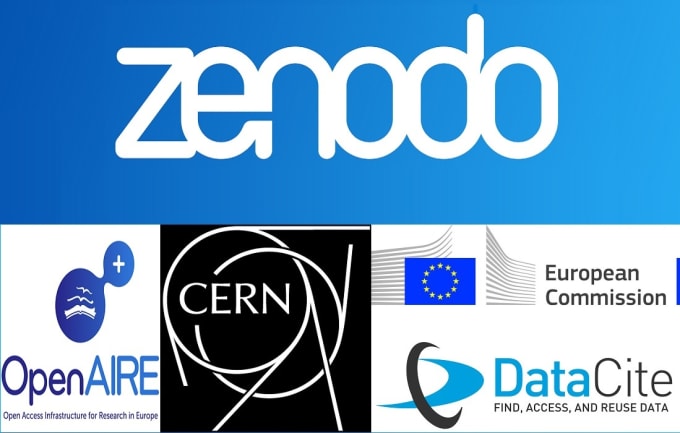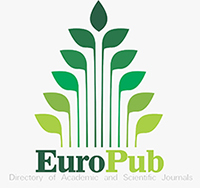Pediatrik apendektomi örneklerinde histopatolojik tanı, mevsimsel değişkenlik, yaş ve cinsiyet açısından apendiks boyutu ve hacminin incelenmesi
Apendektomilerde apendiks boyutu ve hacminin incelenmesi
DOI:
https://doi.org/10.5281/zenodo.8063721Anahtar Kelimeler:
apendektomi- apandisit- karsinoid- fibröz obliterasyon- enterobius vermicularis- paediatrik spesmenlerÖzet
Amaç: Akut apandisit, çoğunlukla çocuklarda görülen, etiyolojisi belirsiz yaygın bir durumdur ve acil apendektomi ile tedavi edilmektedir. Bununla birlikte, tedavi gerektirmeyen bazı beklenmedik tanılar, histopatolojik olarak tespit edilebilir ve bunlar "negatif apendektomi" olarak adlandırılmaktadır. Bu çalışmada negatif apendektomi vakalarının önlenmesinde literatüre katkı sağlayabilecek ek verilere ulaşmak amacı ile pediatrik apendektomi örneklerinde saptanan histopatolojik tanılar literatürde ilk kez makroskopik apendektomi boyutları ve hacimleri göz önünde bulundurularak, yaş ve cinsiyet grupları ve operasyonların yapıldığı mevsimlerle karşılaştırılarak incelendi.
Gereç ve Yöntem: Bu çalışmaya toplam 122 olgu dahil edildi. Her bir örneğin uzunluğu, en uzun çapı, en kısa çapı ve hacmi makroskobik inceleme sırasında ölçüldü. Örnekler, yaş, cinsiyet ve operasyonun gerçekleştirildiği mevsime göre histopatolojik teşhis açısından değerlendirildi.
Bulgular: Erkek-kadın oranı 1.2 idi. Histopatolojik olarak, negatif apendektomi olarak değerlendirilen 81 (%74.6) inflamatuar hastalık [çoğunlukla akut apandisit (%65.5)] ve 31 (%25.4) inflamatuar olmayan hastalık [çoğunlukla lenfoid hiperplazi (%21.3)] tespit edildi. İnflamatuar hastalıklar genellikle kış mevsiminde operasyon edilmişti (p=0.0099), inflamatuar olmayan hastalıklar ise genellikle sonbaharda operasyon edilmişti (p=0.0099). Uzunluk, en uzun çap (y) ve apendiks hacmi, inflamatuar hastalıklarda inflamatuar olmayanlara göre önemli ölçüde daha büyüktü (sırasıyla p=0.0006, p=0.0126 ve p=0.0016). Uzunluk ve hacim, akut apandisitte lenfoid hiperplaziden daha fazla idi (sırasıyla p=0.0124 ve p=0.0358). 12 yaşından küçük hastalarda, lenfoid hiperplazi erkeklerde kadınlara göre daha yaygındı (p<0.001). 12 yaşından büyük hastalarda ise akut apandisit, kadınlarda erkeklere göre daha yaygındı (p<0.034).
Sonuç: Bu çalışma, literatürde ilk kez makroskopik apendiks boyutu ve hacmi, yaş ve cinsiyet, ve mevsimsel değişkenlikler göz önüne alınarak apendektomilerde tespit edilen hastalıklar arasındaki ana farklılıkları vurgulamaktadır. Bu farklılıklar, epidemiyoloji, uygun preoperatif ve patolojik yaklaşım konusunda literatüre ek veriler sağlayabilecek niteliktedir.
İndirmeler
Referanslar
Yabanoglu H, Caliskan K, Ozgur Aytac H, Turk E, Karagulle E, Kayaselcuk F, et al. Unusual findings in appendectomy specimens of adults: retrospective analyses of 1466 patients and a review of literature. Iran Red Crescent Med J. 2014;16(2):e12931.
Flum DR, Koepsell T. The clinical and economic correlates of misdiagnosed appendicitis: nationwide analysis. Arch Surg. 2002;137(7):799-804; discussion
Ferris M, Quan S, Kaplan BS, Molodecky N, Ball CG, Chernoff GW, et al. The Global Incidence of Appendicitis: A Systematic Review of Population-based Studies. Ann Surg. 2017;266(2):237-41.
Addiss DG, Shaffer N, Fowler BS, Tauxe RV. The epidemiology of appendicitis and appendectomy in the United States. Am J Epidemiol. 1990;132(5):910-25.
Carr NJ. The pathology of acute appendicitis. Ann Diagn Pathol. 2000;4(1):46-58.
Öznur U, Sadık Ç, Ülkü S, Hatice K, Ruslan A. The Seasonal Distribution of Appendicitis. 105505/sakaryamedj201616056. 2016;6:120-3.
Alirıza E, Hacı B. Annual and Seasonal Distribution of Acute Appendicitis in Adults. Firat Medical Journal. 2021;26(4):218-23.
Bundy DG, Byerley JS, Liles EA, Perrin EM, Katznelson J, Rice HE. Does this child have appendicitis? JAMA. 2007;298(4):438-51.
Rabah R. Pathology of the appendix in children: an institutional experience and review of the literature. Pediatr Radiol. 2007;37(1):15-20.
Di Saverio S, Podda M, De Simone B, Ceresoli M, Augustin G, Gori A, et al. Diagnosis and treatment of acute appendicitis: 2020 update of the WSES Jerusalem guidelines. World J Emerg Surg. 2020;15(1):27.
Maloney C, Edelman MC, Bolognese AC, Lipskar AM, Rich BS. The Impact of Pathological Criteria on Pediatric Negative Appendectomy Rate. J Pediatr Surg. 2019;54(9):1794-9.
Akbulut S, Tas M, Sogutcu N, Arikanoglu Z, Basbug M, Ulku A, et al. Unusual histopathological findings in appendectomy specimens: a retrospective analysis and literature review. World J Gastroenterol. 2011;17(15):1961-70.
Anderson JE, Bickler SW, Chang DC, Talamini MA. Examining a common disease with unknown etiology: trends in epidemiology and surgical management of appendicitis in California, 1995-2009. World J Surg. 2012;36(12):2787-94.
Ohmann C, Franke C, Kraemer M, Yang Q. [Status report on epidemiology of acute appendicitis]. Chirurg. 2002;73(8):769-76.
Finkelstein P, Picado O, Muddasani K, Wodnicki H, Mesko T, Unger S, et al. A Retrospective Analysis of the Trends in Acute Appendicitis During the COVID-19 Pandemic. J Laparoendosc Adv Surg Tech A. 2021;31(3):243-6.
Baldisserotto M, Marchiori E. Accuracy of noncompressive sonography of children with appendicitis according to the potential positions of the appendix. AJR Am J Roentgenol. 2000;175(5):1387-92.
Benjaminov O, Atri M, Hamilton P, Rappaport D. Frequency of visualization and thickness of normal appendix at nonenhanced helical CT. Radiology. 2002;225(2):400-6.
Burak K, Ali A, Hamza C. The effect of appendix diameter on perforation in
acute appendicitis cases. Cumhuriyet Medical Journal. 2019;41(2):392-7.
Webb EM, Wang ZJ, Coakley FV, Poder L, Westphalen AC, Yeh BM. The equivocal appendix at CT: prevalence in a control population. Emerg Radiol. 2010;17(1):57-61.
Pickhardt PJ, Suhonen J, Lawrence EM, Munoz del Rio A, Pooler BD. Appendiceal length as an independent risk factor for acute appendicitis. Eur Radiol. 2013;23(12):3311-7.
Dibekoglu C. Does the length matter in acute appendicitis for the perforation risk?: A retrospective cohort study. Medicine (Baltimore). 2022;101(48):e32001.
Monajemzadeh M, Hagghi-Ashtiani MT, Montaser-Kouhsari L, Ahmadi H, Zargoosh H, Kalantari M. Pathologic evaluation of appendectomy specimens in children: is routine histopatholgic examination indicated? Iran J Pediatr. 2011;21(4):485-90.
Mansueto P, Iacono G, Seidita A, D'Alcamo A, Sprini D, Carroccio A. Review article: intestinal lymphoid nodular hyperplasia in children--the relationship to food hypersensitivity. Aliment Pharmacol Ther. 2012;35(9):1000-9.
Buyukbese Sarsu S, Ucak R, Buyukbese MA, Karakus SC, Deniz H. Unusual Histopathological Findings in Childhood Appendectomy Specimens. Indian J Surg. 2015;77(Suppl 2):594-9.
Xu Y, Jeffrey RB, DiMaio MA, Olcott EW. Lymphoid Hyperplasia of the Appendix: A Potential Pitfall in the Sonographic Diagnosis of Appendicitis. AJR Am J Roentgenol. 2016;206(1):189-94.
Aydin S, Tek C, Ergun E, Kazci O, Kosar PN. Acute Appendicitis or Lymphoid Hyperplasia: How to Distinguish More Safely? Can Assoc Radiol J. 2019;70(4):354-60.
Sulu B, Gunerhan Y, Palanci Y, Isler B, Caglayan K. Epidemiological and demographic features of appendicitis and influences of several environmental factors. Ulus Travma Acil Cerrahi Derg. 2010;16(1):38-42.
Deng Y, Chang DC, Zhang Y, Webb J, Gabre-Kidan A, Abdullah F. Seasonal and day of the week variations of perforated appendicitis in US children. Pediatr Surg Int. 2010;26(7):691-6.
Yalcin B, Karnak I, Orhan D, Oguz B, Aydin B, Kurucu N, et al. Paediatric appendiceal neuroendocrine tumours: a review of 33 cases from a single center. ANZ J Surg. 2022;92(4):742-6.
Tchana-Sato V, Detry O, Polus M, Thiry A, Detroz B, Maweja S, et al. Carcinoid tumor of the appendix: a consecutive series from 1237 appendectomies. World J Gastroenterol. 2006;12(41):6699-701.
Ahmed MU, Bilal M, Anis K, Khan AM, Fatima K, Ahmed I, et al. The Frequency of Enterobius Vermicularis Infections in Patients Diagnosed With Acute Appendicitis in Pakistan. Glob J Health Sci. 2015;7(5):196-201.
Park NH, Oh HE, Park HJ, Park JY. Ultrasonography of normal and abnormal appendix in children. World J Radiol. 2011;3(4):85-91.
Misdraji J, Graeme-Cook FM. Miscellaneous conditions of the appendix. Semin Diagn Pathol. 2004;21(2):151-63.
Kim CJ, Chung HY, Kim SY, Kim YO, Ryu SY, Kim JC, et al. Acute appendicitis in Henoch-Schonlein purpura: a case report. J Korean Med Sci. 2005;20(5):899-900.
Sesia SB, Mayr J, Bruder E, Haecker FM. Neurogenic appendicopathy: clinical, macroscopic, and histopathological presentation in pediatric patients. Eur J Pediatr Surg. 2013;23(3):238-42.
Dincel O, Goksu M, Turk BA, Pehlivanoglu B, Isler S. Incidental Findings in Routine Histopathological Examination of Appendectomy Specimens; Retrospective Analysis of 1970 Patients. Indian J Surg. 2018;80(1):48-53.
İndir
Yayınlanmış
Nasıl Atıf Yapılır
Sayı
Bölüm
Lisans
Telif Hakkı (c) 2023 Chronicles of Precision Medical Researchers

Bu çalışma Creative Commons Attribution-NonCommercial-ShareAlike 4.0 International License ile lisanslanmıtır.






